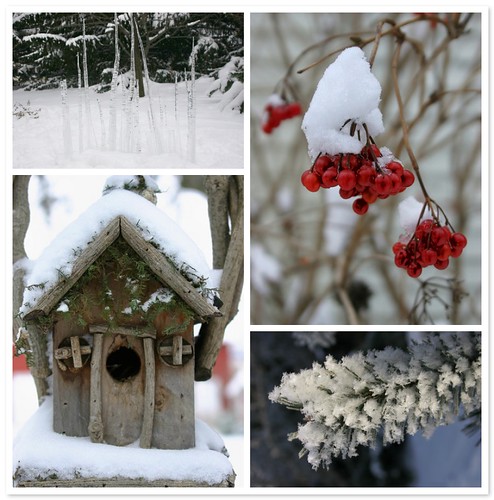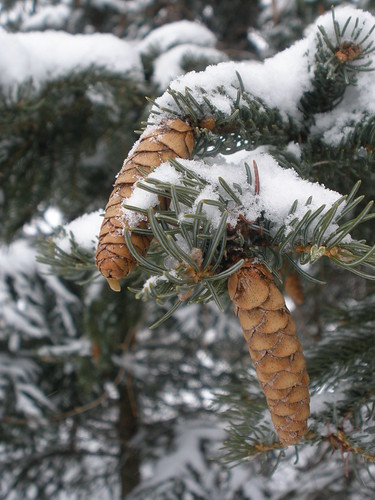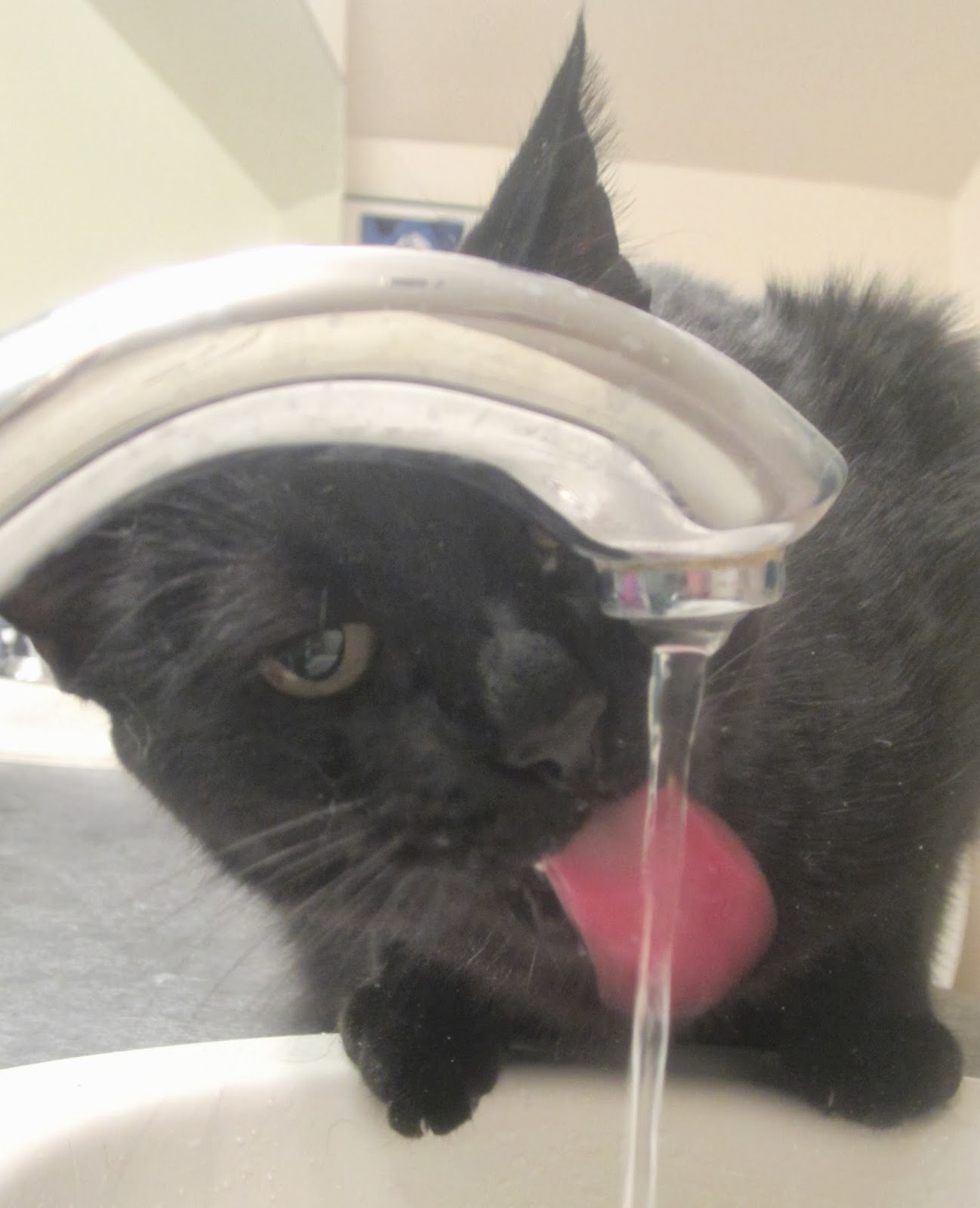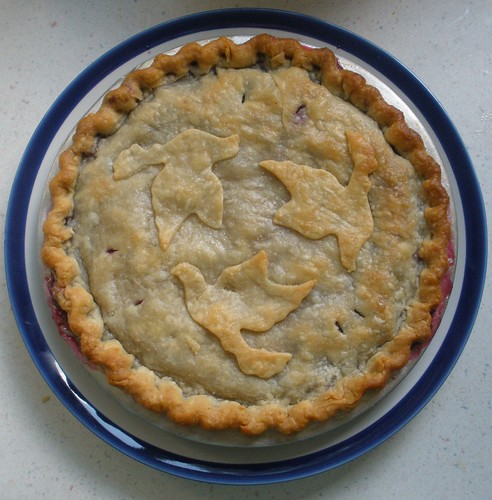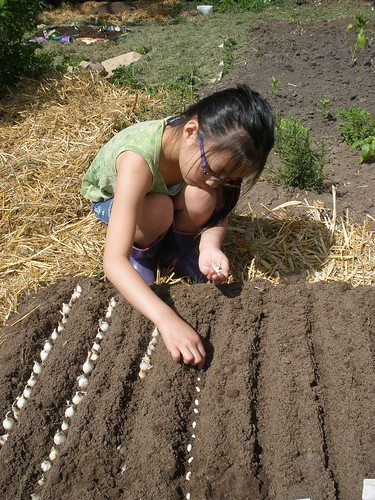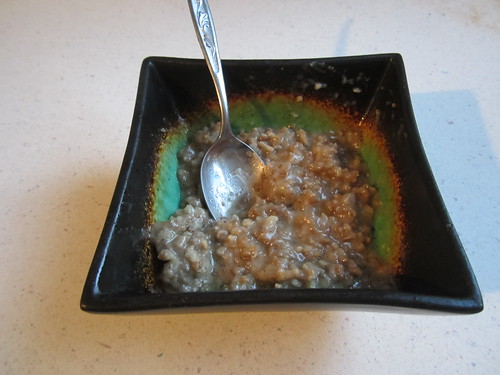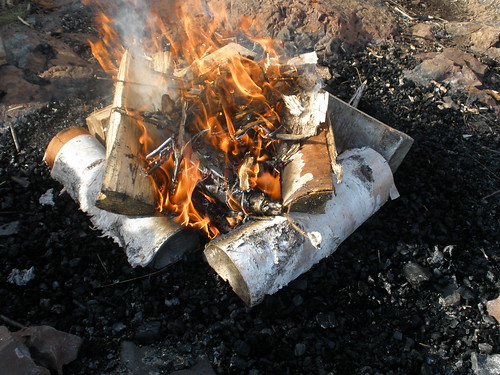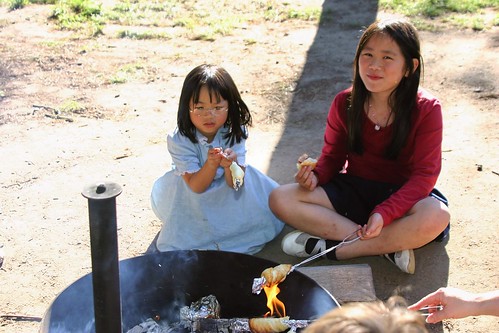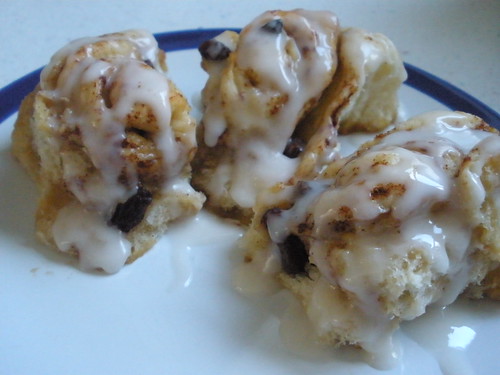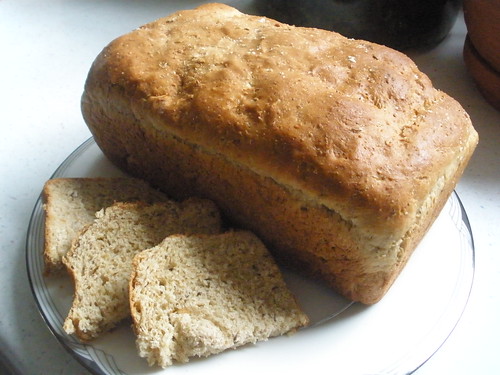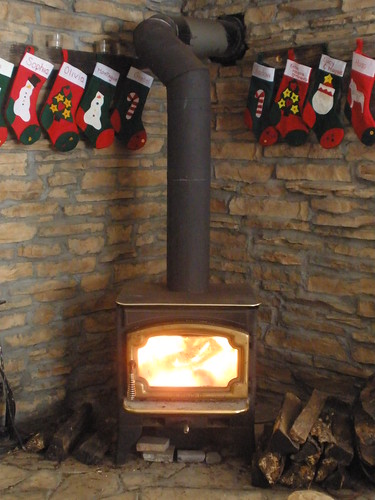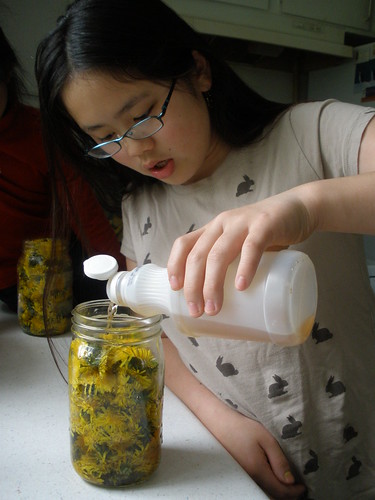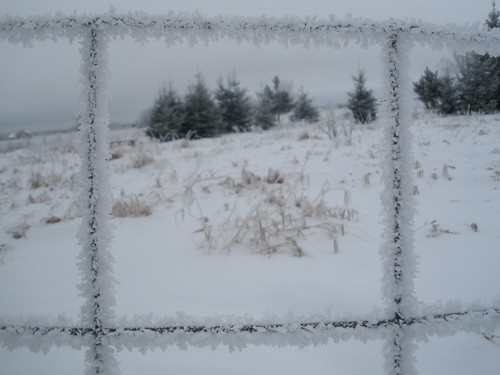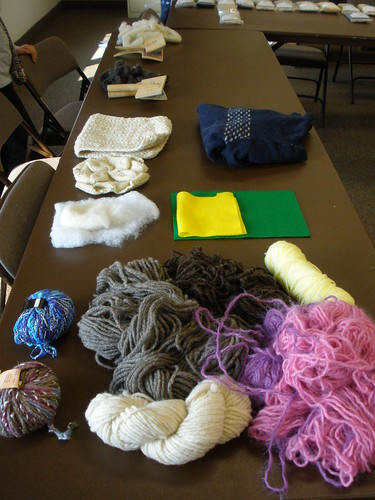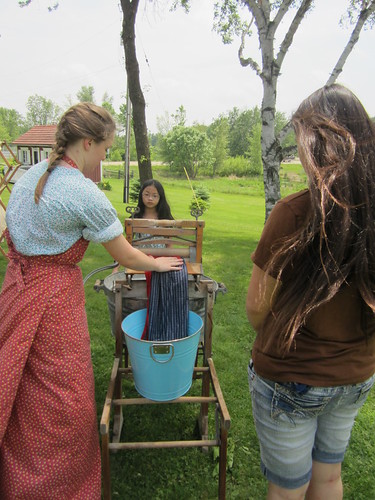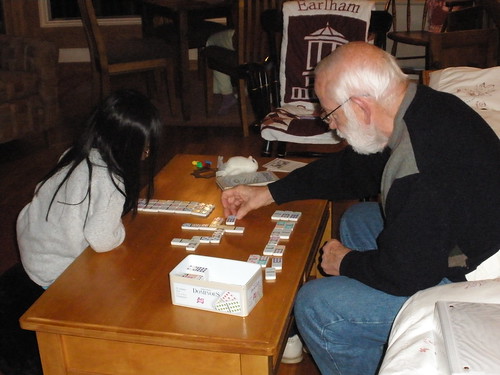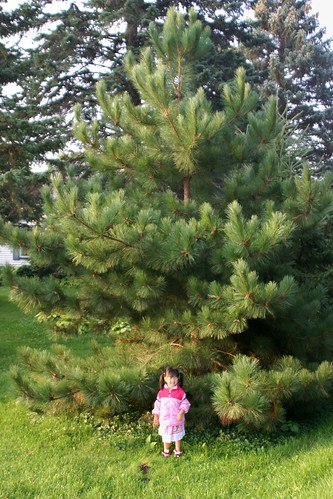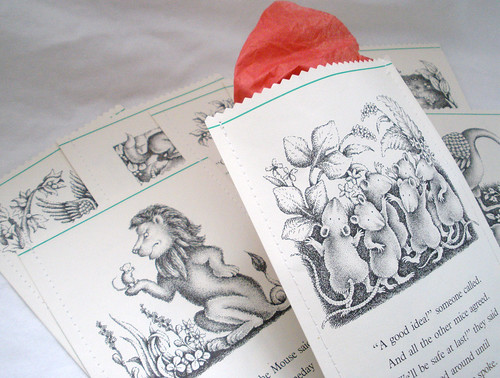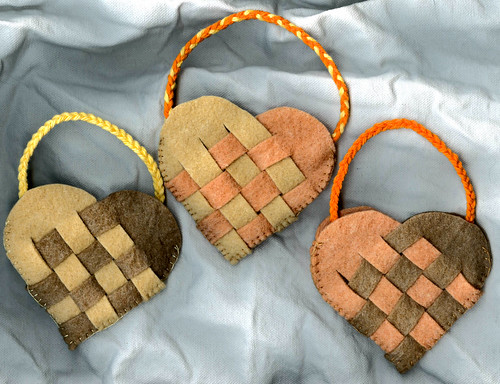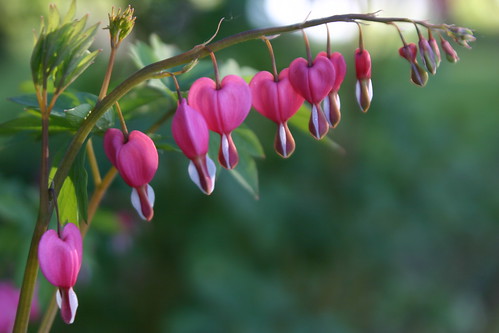I recently saw on
The Prairie Homestead a list with 121+ skills for the Modern Homestead and on
Granny Miller a list of 101 basic homesteading skills. Looking them over, I was curious to know how many I had done already and what ones I wanted to do.
So, I read through the lists and put each item in one of three categories:
=> Skills I Have/Things I've Done
=> Things I've Done, But Need More Practice
=> Things I've Never Done
There also are some things that I would like to do that weren't on either lists, so I've added those to the list of homesteading skills below.
Skills I Have/Things I've Done
1. Compost both kitchen scraps and animal manure.
2.
Make a great pie crust.
Blueberry pie.
The crust recipe is from my Grandma who used to be a baker.
3. Learn how to cook a whole chicken.
4. Grow a vegetable garden in your climate.
Olivia planting seeds in the garden.
5. Learn first-aid and CPR.
6. Know how to dehydrate foods and herbs to preserve for later use.
Sophia drying catnip in the dehydrator.
7. Assist with foaling, kidding, lambing, and/or calving.
8. Make sausage gravy from scratch.
Sausage gravy I made with Olivia.
It is served over biscuits.
9. Know how to drive a manual transmission in a car, truck, and/or tractor.
10. Learn how to fish.
11. Learn how to tell if your chickens are molting.
12. Know how to tell if you can doctor an animal at home, or if it needs to be taken to the vet.
13. Dry laundry using a drying rack or clothesline.
14.
Make your own laundry detergent.
15. Know how to build a fire.
Fire I built next to Lake Superior.
16. Cook over an open fire or on a wood cookstove.
Olivia and Sophia cooking over an open fire
on a camping trip we took.
17. Make sourdough bread and rolls; and maintain your own starter.
Amish sourdough cinnamon rolls.
18. Make basic yeast dough which can be turned into loaves, rolls, buns, pretzels, etc.
Caraway rye bread that I made.
19. Incubate fertilized eggs and hatch your own chicks.
20. Learn how to identify and manage a broody hen.
21. Make your own jellies and jams.
Sophia using the homemade blueberry jam we made.
22. Learn how to darn a sock.
23.
Mend damaged clothes so they don’t have to be thrown away.
24.
Sew clothing and fabric items from scratch.
25. Learn how to knit.
26.
Learn how to quilt.
27.
Learn how to crochet.
My Mom wearing the prayer shawl I made for her
as a Christmas gift one year.
28. Heat your home with wood or other sustainable sources.
The woodstove in the living room.
29.
Use a water bath canner to preserve foods.
30. Learn how to prepare for a blizzard.
The girls dressed appropriately for playing outdoors in the winter.
31. Understand the basics of animal breeding.
32.
Learn how to make butter.
33.
Learn how to use essential oils properly and safely.
34.
Build/use a greenhouse or cold frame to extend your growing season.
35. Learn how to harvest, split, and stack firewood.
Sophia taking a turn at splitting wood.
36. Make your own vinegar.
Sophia making dandelion vinegar.
37.
Make your own skincare items.
38.
Make your own cleaning supplies.
39. Know how to use non-electric lighting.
40. Put food scraps like eggshells, coffee grounds, apple peels, and whey to good use.
41. Know how to protect your livestock from predators.
The woven wire fence between pastures.
42. Learn how to spin wool.
43. Know basic plumbing skills (e.g., unclog a toilet or sink).
44. Make your own paper.
45. Learn how to weave.
46. Understand how to propagate plants through root cuttings.
47. Learn how to clear pasture and brush.
48. Learn to cook with a sun/solar oven.
Sophia with a solar cooker made from tin foil and a bowl.
We also have a more complex one with a lid.
49. Learn how to read the weather.
Storm clouds rolling in.
50.
Learn how to cook 10 basic meals from scratch.
51. Learn how to thaw out frozen pipes without busting them.
52. Learn basic astronomy.
The moon in the early evening.
53. Learn how use a wash tub, hand-wringer and washboard.
Washing clothes by hand at Gammelgarden Museum.
54. Learn the mental skills necessary to jury rig anything with duct tape, baling twine and whatever is on hand.
55. Learn how to read an almanac.
56. Learn how entertain yourself and live without electronic media.
Olivia and my Dad playing dominoes.
57.
Learn how to swap, barter and network with like-minded people.
58. Learn how to refinish furniture.
59.
Learn the mental and spiritual skills to realistically deal with life, death, and failure.
60. Learn how to tell the time of day by the sun.
The sun rising over Lake Superior in Duluth.
61. Learn how to plant a tree.
Olivia by a tree my Dad and brother planted.
We've planted lots of fruit and evergreen trees
here at the farm since 1995.
62.
Learn how grow kitchen herbs.
63. Learn how to use electric netting or fencing
64. Learn how to make fire starters from corn cobs or pinecones
Things I've Done, But Need More Practice
65. Milk a goat, cow, or sheep.
66. Know how to properly prune and graft a fruit tree.
Olivia trimming back a tree by the vegetable garden.
67. Know how to properly handle, shoot, and clean a gun.
68.
Make cheese – master simple soft cheeses and hard cheeses too.
69. Learn how to make yogurt.
72. Learn the art of no-till gardening.
73. Learn how to candle eggs so you can tell if they are fertilized.
74. Learn how to build and fix fences.
75. Grind your own wheat for baking.
Olivia turning the handle on the grain mill.
76. Re-purpose everyday items to save them from the landfill.
Bags I made from a children's book we were done reading.
77. Learn how to tie a variety of basic knots.
78.
Learn how to train animals (dogs, horses).
79. Learn how to make baskets.
Baskets made from wool felt and cotton yarn.
80. Learn how to work together with your neighbors to accomplish more and foster a sense of community.
81. Learn how distinguish healthy plants and animals from unhealthy plants or animals
Bleeding hearts in the spring.
82. Learn how to use a pressure tank garden sprayer
83. Learn how to make and set traps for unwanted vermin and predators.
Things I've Never Done
(The ones that are italicized are the ones I would like to learn how to do.)
84. Give an animal an injection (the muscle, in the vein, or under the skin)
85. Know how to assist an animal with a difficult birth. (Thankfully, all the sheep I had did not have difficult births.)
86. Grow a windowsill herb garden. (I've always had enough space to grow outside.)
87. Learn how to make sausage. Did this in November 2016 by taking a class at Gammelgarden Museum about how to make two types of potato sausages.
88. Learn how to safely cut down a tree.
89. Learn basic metal working skills and welding.
90. Master basic mechanic skills so you can fix your tractors and vehicles.
91. Learn how to hunt wild game–both large and small.
92. Learn the laws and regulations regarding hunting wild game in your area through a Hunter’s Safety course.
93. Learn how to humanely kill, gut, and clean an animal.
94. Know how to butcher an animal and the proper cuts of meat.
95. Learn how to kill and pluck a chicken.
96. Use a smoker to smoke cheeses, meat, bacon, hams, etc.
97. Learn how to clean, fillet, and cook fish.
98. Learn how to cut, bale, and stack hay. (I've stacked hay, but never cut and baled it since we don't have the equipment to do that.)
99. Master the art of intensive grazing so you can better manage your pastures.
100. Make your own soap.
101. Cook outside with a dutch oven.
102. Trim the feet of your goats and sheep.
103. Master basic carpentry skills so you can repair outbuildings or even build basic furniture pieces.
104. Learn how to tan a hide.
105. Learn how to save seeds.
106. Learn how to use lacto-fermentation to preserve foods.
107. Learn how to use a pressure canner and/or cooker. Did this on September 22, 2014, when I made tomato soup in the pressure canner.
108. Make your own sauerkraut.
109. Forage for wild edibles in your area.
110. Learn how to identify the difference between edible and poisonous mushrooms.
111. Learn how to identify the difference between harmless and venomous snakes in your area.
112. Learn how to sharpen a knife or ax.
113. Learn how to prepare for a wildfire.
114. Know how to halter-break and train an animal.
115. Learn how to start seeds indoors.
116. Store food in a root cellar or in a cool basement.
117. Learn how to make herbal extracts, infusions, poultices, and tinctures.
118. Learn how to render lard or tallow.
119. Learn how to chop ice. (I'm thinking this means blocks of ice for refrigeration or keeping things frozen.)
120. Learn how to make and apply whitewash.
121. Tap trees for maple syrup.
122. Learn how to repair a roof.
123. Know how to humanely euthanize an animal.
124. Understand how to identify the weeds in your yard/pastures and figure out which ones are edible.
125. Learn how to back up a trailer.
126. Know how to purify water.
127. Learn how to make bone broth.
128. Put together a 72-hour kit for emergencies.
129. Learn how to cook eggs in a cast iron skillet without a sticky mess.
130. Make your own bacon and cured hams.
131. Learn how to make your own chicken feed.
132. Live within your means and get out of debt.
133. Learn about aquaponics or fish farming.
134. Make your own ammunition or reload ammunition.
135. Shear a sheep and process the wool. (I always had someone else do this for me.)
136. Learn how to install/use a composting toilet
137. Learn how to use vermiculture (composting with worms) to create nutrient-rich food for your garden.
138. Make your own fishing lures or spears.
139. Use alternative energy sources like solar or wind to power your homestead.
140. Implement natural pest control measures.
141. Know how to clean, dress, stitch/staple a wound in the event of an emergency.
142. Learn how to make natural dyes.
143. Know how to do small engine and care repair and maintenance (e.g., change a tire, change oil, change spark plugs).
144. Learn how to lay bricks or stones to create a pathway.
145. Learn some basic electrical skills for repairs (e.g., wire a lamp).
146. Learn how to harvest rain-water.
147. Learn how to use grey-water.
148. Learn how to properly store bulk food for long-term storage.
149. Learn how to sprout nuts and seeds for optimum nutrition.
150. Learn how to safely use a chainsaw.
151. Learn the differences between trees and the unique properties of various types of wood.
152. Learn how to pasteurize milk.
153. Learn how to witch for water with a forked branch or a bent metal hanger.
154. Learn how to set an ear tag or tattoo for animal identification.
155. Learn how determine an animal’s age by its teeth.
156. Learn how to cut and glaze glass.
157. Learn how to hand thresh and winnow wheat or oats and other small grains.
158. Learn how to build a stone wall.
159. Learn how to use an awl and basic leather repair.
160. Learn how put in a new post and mailbox that's been damaged by the snowplow.
161. Learn how to dig and properly use a shallow well.
162. Learn how to sew your own underwear.
163. Learn how drive a draft animal.
164. Learn how to use a scythe.
165. Learn how to graft baby animals onto a foster-mother.
166. Learn how to castrate livestock. (This was done by a veterinarian or farmer...never by me...when I had sheep.)
167. Build and use an outdoor oven.
168. Build a backyard pond or creek.
169. Braid a rag rug.
170. Use a push-reel lawn mower if the lawn tractor is not working. (My grandma had one of these that I remember using, but we do not have one at the farm currently.)
171. Make natural food treats for pets and livestock.
172. Grow your own mushrooms. We bought an inoculated log with shiitake mushrooms in June 2014. The mushrooms started growing and we could harvest them in September 2014. It would be nice to expand what we grow to more varieties and a larger quantity.
173. Make and use a bow and arrow.
174. Invest in proper clothing for outdoor wear for all four seasons. These ideas came from The Barefoot Tribe:
- strong work overalls/coveralls
- solid work boots/rubber boots/winter boots
- thick wool socks, mitts, hats, work gloves, etc (learn to knit them yourself)
- wool sweaters and work shirts
- rain jacket and pants
- winter jacket
- cotton clothes for summer
- wide-brimmed hat (e.g., straw hats for summer)
- good sunglasses
- moccasins for indoor winter wear and/or outdoor summer wear
175. Operate a HAM radio. In a disaster, a HAM radio is your communications lifeline to the outside world.






















